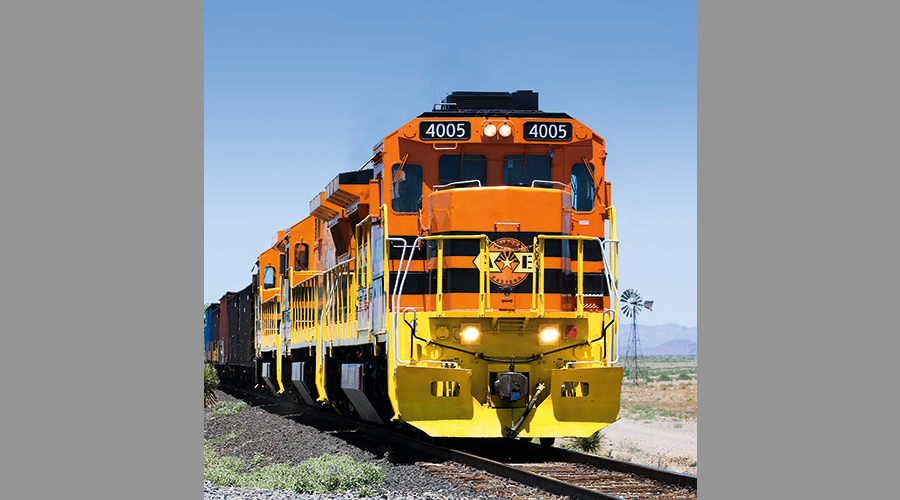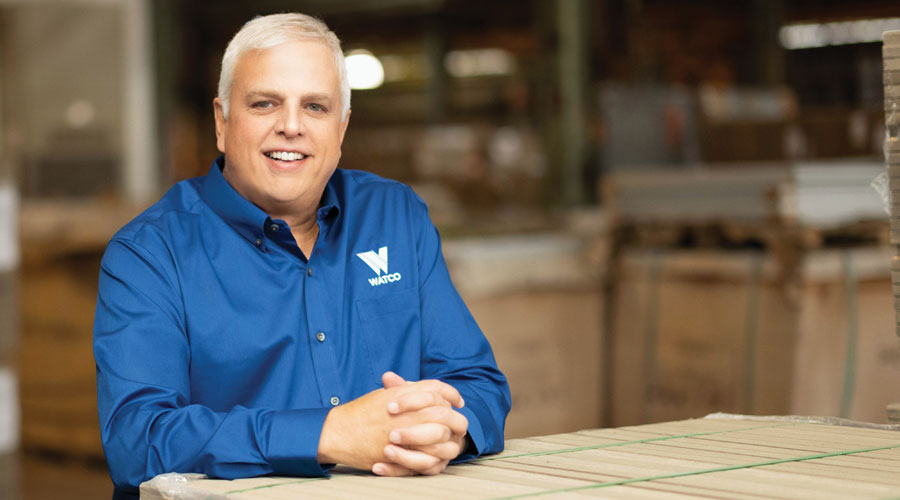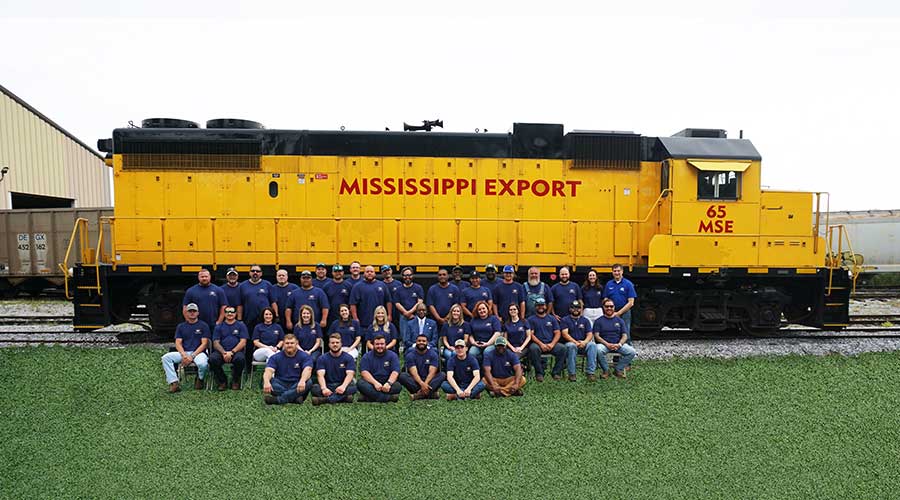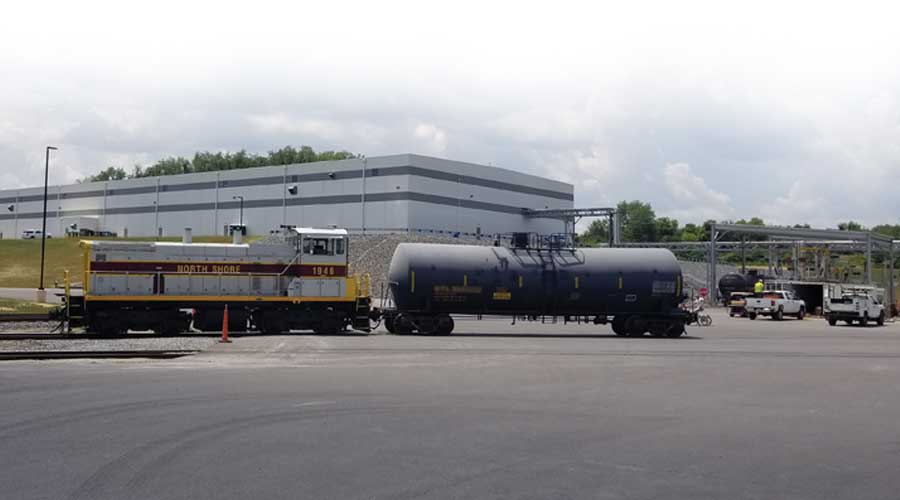Stay updated on news, articles and information for the rail industry
November 2007
Rail News: Short Lines & Regionals
A regional with the right connections
Philosopher, poet and novelist George Santayana said, “Those who cannot remember the past are condemned to repeat it.” Managers at the Wheeling & Lake Erie Railway Co. (WLE) take that to heart.
They’re well aware of the shortcomings of the “old” WLE, a railroad formed in 1871 to move coal between West Virginia mines and Lake Erie ports in Ohio. The railroad eventually became too dependent on one commodity and its Class I owner — the Norfolk & Western, and later, Norfolk Southern Railway — to generate traffic and revenue.
During the 1960s and 1970s, the WLE’s coal business went south and the Norfolk & Western struggled financially, along with other railroads, prior to deregulation and the Southern Railway merger. Financial woes eventually led the WLE to dissolve in 1989.
A year later, the regional was reborn as the “new” WLE after NS sold lines and trackage rights between Bellevue, Ohio, and Hagerstown, Md., to an investor group. The WLE faced a fleet of aging leased-only equipment and infrastructure that badly needed upgrading.
The railroad also quickly became saddled with debt.
The new owners “ran out of money, and didn’t make lease payments or pay back banks,” says Chairman and Chief Executive Officer Larry Parsons, who joined the regional in 1992 after serving as Kansas City Southern’s chief operating officer. “It took a couple of years to get [finances] squared away.”
In 1994, Parsons and other members of a management team purchased the regional.
Since then, he’s helped lead an effort that’s put the past squarely behind the WLE and ushered in steadily increasing carloads and revenue, a diversified traffic mix, and upgraded rolling stock and infrastructure.
Managers have worked together to find ways to expand the revenue base and improve operations. They’ve formed a real estate and industrial development department to help shippers locate sites for plastics, aggregates and other facilities; landed two federal Railroad Rehabilitation and Improvement Financing (RRIF) loans to help fund track improvements and rolling stock acquisitions; and forged relationships with customers and connecting railroads.
Now, the WLE is attracting more customers because it offers connections to three Class Is — NS, CSX Transportation and Canadian National Railway Co. — and 14 short lines, and a 286,000-pound-car-compliant network that taps into four states, managers say.
The regional, which owns 575 miles of track and retains trackage rights to another 265 miles, operates in Ohio (including the cities of Akron, Brewster, Canton and Lima); West Virginia (Wheeling); Pennsylvania (Pittsburgh and Connellsville); and Maryland (Cumberland and Hagerstown).
Railroading 101
Yet, all the WLE has to offer wouldn’t mean much to shippers if the regional didn’t do a better job of basic railroading. For Parsons & Co., that means working with customers every day to ensure the railroad is dropping off empty cars, picking up loaded cars and delivering freight when promised.
“We’re providing consistent service and firming up relationships with customers,” says Parsons.
The fruits of management’s labor are showing up in the box score. During the past five years, annual carloads have increased 20 percent to about 151,000 units and annual net line-haul revenue has shot up 65 percent.
“Revenue has grown more than carloads because we’re seeking new sources of revenue,” says WLE President William Callison. “For example, it might mean pursuing a steel move instead of a coal move because, from a business standpoint, the steel traffic means more margin.”
In the industrial development department, the railroad has attracted 42 new customers and 20 plant expansions or modernizations since 1992. In addition, the road’s traffic mix has expanded well beyond coal. The regional now also moves steel, iron ore, aggregates, chemicals, plastics, forest products and grain.
“We’re blessed with diversification,” says Vice President of Sales and Marketing Larry Wood.
The regional also is fortunate to serve five steel mills.
“Two or three mills is the most you’ll usually see on a railroad,” says Parsons.
In addition, plastics traffic is steadily growing because Akron — formerly home to several major tire manufacturers and known as the rubber capital of the world — has transitioned into a polymer-producing hotbed.
“Seventy percent of all the plastics consumed in the nation are produced within a 300-mile radius of Akron,” says Parsons.
But WLE managers aren’t attributing the railroad’s success to good fortune. They’ve spent years trying to build the regional’s reputation as a railroad that offers reliable short- or long-haul transportation at competitive rates, managers say.
Faster and focused
Key to providing on-time service is increasing train speed on the mainline. During the past few years, crews have been replacing rail and ties, surfacing track and stabilizing slopes on key line segments so trains can operate at 40 mph instead of 10 mph or 20 mph.
By year’s end, the railroad will complete the work on more than 150 miles of track, leaving about 35 more miles to finish off next year, says VP of Engineering Kasey O’Connor.
Department managers also conduct daily meetings to review operations and ensure traffic is handled efficiently.
“Every day at 5 p.m. we have what Larry calls ‘turnovers.’ All the managers meet to talk about what happened that day and what still needs to happen that night,” says Wood. “You’d be surprised what we get done in a few minutes.”
Managers address shippers’ service concerns during the meetings, as well. Since the WLE is a Class II, it can “stay closer to the customer and react faster than a Class I,” says Wood.
One shipper can vouch for the effect of the WLE’s performance on its business. Sunrise Cooperative Inc., an Ohio grain and fertilizer co-op, has increased its total market share about 20 percent the past two years because of the railroad’s “very timely” service and willingness to partner with the coop to address transportation needs, says Sunrise Corporate VP Bob Sunderman.
Reliable rail service also helped spur the co-op’s decision to expand fertilizer and grain capacity, he says.
Since 2005, Sunrise has increased an inbound rail fertilizer facility’s capacity by 400 percent and built two grain storage bins on WLE’s line that can store 1.4 million additional bushels of grain.
Co-operation
Late last year, the WLE also helped the co-op arrange a long-haul corn move by reaching a joint line agreement with NS and providing Sunrise a long-term rate.
In January, the WLE and NS began moving corn in 85-car shuttle trains from Ohio storage facilities to a Tennessee processor. Sunrise plans to load 40 trains annually.
“It isn’t feasible to move the corn by truck,” says Sunderman. “We’re too far north, and there are lots of bushels of corn between here and Tennessee.”
The WLE currently is trying to win over four other shippers by tailoring service and rates to their transportation needs, says Wood. The short-term traffic opportunities include stone, feed and asphalt plants.
“It’s important to bring on new customers in addition to keeping the contracts you have,” says Callison. “It comes down to competitive rates and reliable service.”
It also hinges on well-maintained infrastructure and rolling stock.
To that end, the WLE during the past five years has spent $8 million of its own funds and $39 million from the two RRIF loans to improve track and upgrade the freight-car and locomotive fleets.
“We’ve put a lot of money into the railroad and it’s paid dividends,” says Callison.
Last year, the railroad used a $14 million RRIF loan to help offset the cost of purchasing 150 multi-purpose hoppers from FreightCar America Inc. — the regional’s first-ever new rail cars — and acquiring several used locomotives.
In 2004, the WLE obtained a $25 million RRIF loan to help fund track rehabilitation work.
During the past four years, the regional has replaced 250,000 wood ties and installed continuous-welded rail (CWR) on 35 miles of track, says O’Connor. Work funded by the RRIF loan and WLE have enabled the regional to remove temporary speed restrictions on more than 120 miles of track, he says.
In addition, crews this past summer replaced seven miles of 90-pound jointed rail with 115- and 136-pound CWR on a River Subdivision line — the last segment of 90-pound rail on WLE’s mainline. The project enabled the railroad to eliminate a speed restriction and boost train speed from 10 mph to 25 mph.
“We’ll be able to handle heavier axle loads and accommodate an increase in business, such as coal from West Virginia, and scrap steel and grain we anticipate coming off the [Ohio] river,” says O’Connor.
The railroad also recently upgraded its Akron yard by installing 10,000 wood ties, surfacing all track and raising some track sections about a foot. By year’s end, crews will complete a Brewster yard upgrade project, which calls for replacing 16,000 ties, surfacing yard track and installing switches on the lead, says O’Connor.
Bigger MOW budget on tap
Next year, the railroad plans to increase its maintenance-of-way (MOW) budget from 2007’s $8.4 million to $9 million, primarily because of higher labor and material costs.
The majority of MOW work will be targeted on the east end of the network in Pennsylvania to “prepare for tonnage we project on the route,” says O’Connor. Next year’s projects include replacing 40,000 ties, surfacing track, installing rail on some curves and re-decking 10 timber bridges.
Although spending will increase in the engineering department, the railroad is trying to reduce spending in the mechanical department — specifically, fuel costs. The WLE is installing auxiliary power units (APUs) on locomotives to reduce fuel consumed by idling. The units will help reduce annual diesel costs, which currently total about $4 million, by 30 percent, says VP of Transportation James Northcraft.
Ecotrans Technologies Inc., which Teleflex Inc. acquired last year, is supplying the APUs.
“We’re going on our second winter with the APUs,” says Northcraft. “It will take time, perhaps 10 years, to install the units on all our locomotives. We’re a regional, so we can’t take a big bite out of the apple right away.”
Chipping away
For the past 15 years, the WLE has been nibbling away at its mechanical, engineering and marketing goals.
Still, a number of objectives need to be met. For example, Global Positioning System units for locomotives and narrow-band radios remain on Northcraft’s wish list, and Parsons believes the railroad can always strive to be a more consistent service provider.
As long as managers continue to work together to attain goals, the WLE will keep growing and improving, says Callison.
“The mechanical department has rebuilt locomotives and cars, the transportation department has been making service reliable, the engineering department has improved infrastructure and the marketing department must be doing something right,” he says. “It’s really a team effort.” 


 2025 MOW Spending Report: Passenger-rail programs
2025 MOW Spending Report: Passenger-rail programs
 Gardner steps down as Amtrak CEO
Gardner steps down as Amtrak CEO
 Guest comment: Oliver Wyman’s David Hunt
Guest comment: Oliver Wyman’s David Hunt
 Women of Influence in Rail eBook
Women of Influence in Rail eBook
 railPrime
railPrime








